Update, October 30, 2023: We had a chance to get our hands on a Snapdragon 8 Gen 3 prototype phone to confirm Qualcomm’s numbers and do some additional testing.
Qualcomm finally announced the Snapdragon 8 Gen 3 at this week’s Snapdragon Summit in scenic Hawaii. We expect the chip to power most high-end Android phones and tablets launching next year, starting in a few weeks with an unnamed Qualcomm partner. Of course, Qualcomm and its Senior Vice President of Mobile, Compute and Infrastructure Alex Katouzian (pictured above) say this SoC reaches new heights of performance and efficiency, and people should look forward to the prospect of buying a new phone with Snapdragon 8 Gen 3 Mobile Platforms . To illustrate this point, we have early benchmarks for the Snapdragon 8 Gen 3, and some of them do show an impressive jump. Drooling…
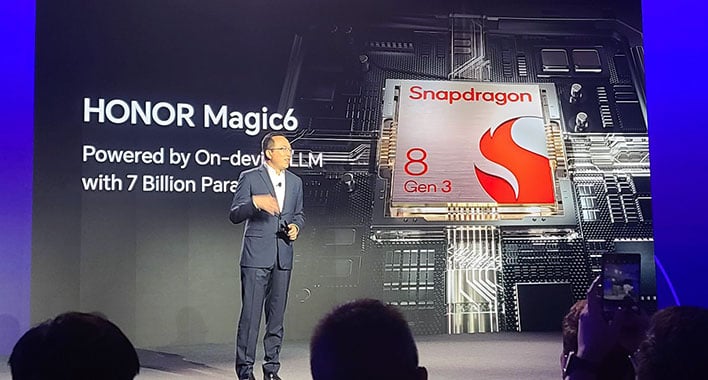
Snapdragon 8 Gen 3 Geekbench 6 performance (courtesy of Qualcomm)
Geekbench isn’t always a particularly informative benchmark because it’s completely synthetic and OEMs optimize it. Regardless, Geekbench can be a good starting point for comparison. Geekbench testing has recently been upgraded to version 6, which features new methods for testing multi-core configurations and uses higher-resolution diagnostic assets.
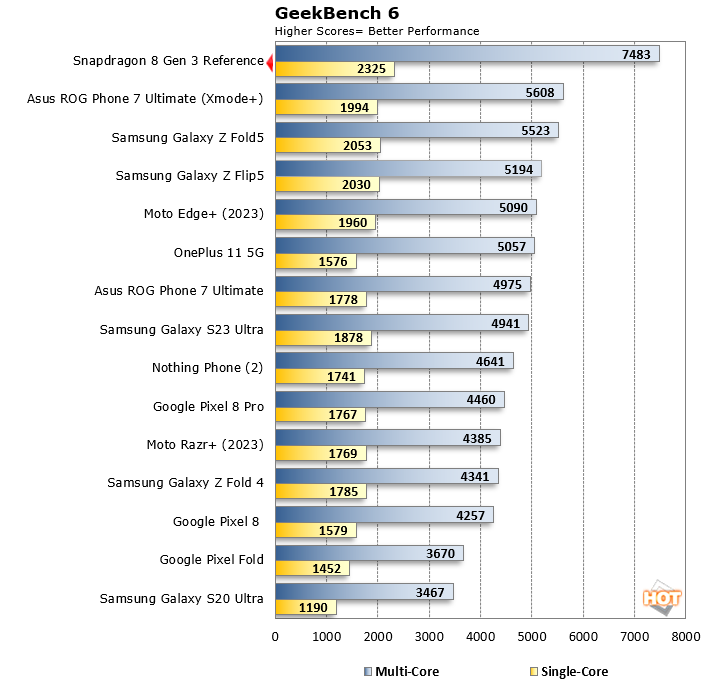
PCMark Work 3.0 Snapdragon 8 Gen 3 Performance
UL’s Android PCMark is an excellent test suite if you want to benchmark a variety of tasks on your phone, such as image and video editing, as well as lighter day-to-day workloads like email and web browsing. When you see the tests running in real time, it’s obvious that the scripted application tests have been carefully selected and tuned to use the mobile platform in a very controlled way. Take a look at the Snapdragon 8 Gen 3 scores.
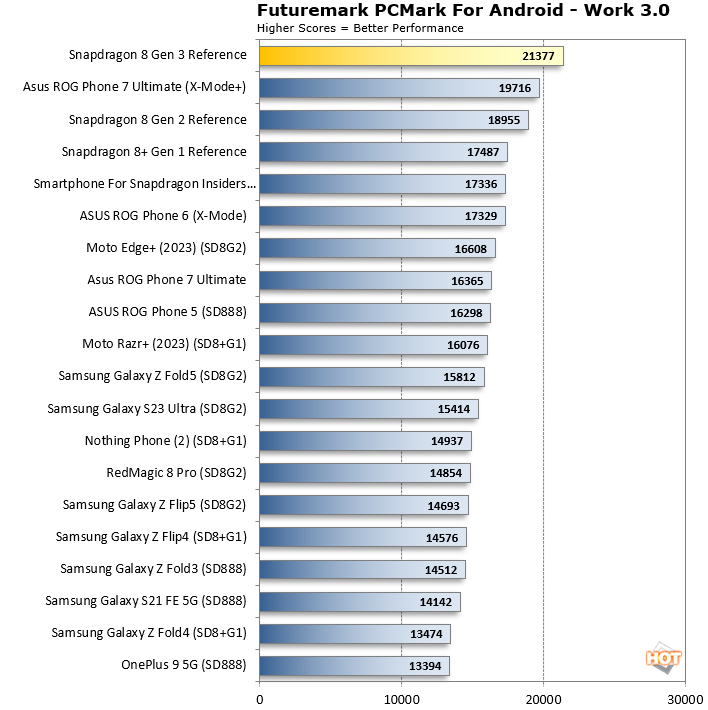
It’s rare that we see big jumps on overall system tests like PCMark, but the Snapdragon 8 Gen 3 did manage to maintain a healthy margin against the class-leading Asus ROG Phone 7. Still, you might have to go back a few generations before the phones had significantly slower PCMark scores.
Snapdragon 8 Gen 3 AnTuTu Benchmarks
AnTuTu is another system ranking benchmark that measures work-oriented tasks, gaming, and raw hardware speed. It returns four top performance results: CPU, RAM, 3D, UX (or user experience), and then blends them together into a vague overall score. That’s the number we’re focusing on here.
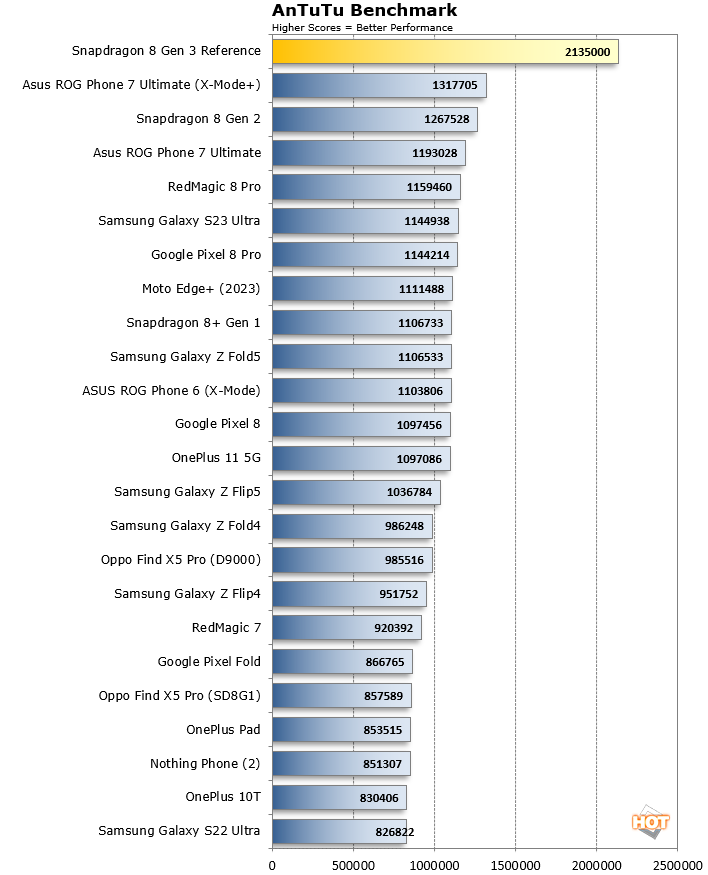
These early benchmarks show the Snapdragon 8 Gen 3 performing well against the AnTuTu competition. The performance of the new chip is about 40% higher than that of ROG Phone 7, which is a generational leap. It will be interesting to see if the production equipment maintains this level of performance.
GFXBench Benchmark: Impressive new Adreno GPU
We also have some purely gaming benchmarks to test the performance of the new Adreno GPU. GFXBench’s Aztec test is a Vulkan-based demo that lets more powerful devices shine. However, the Snapdragon 8 Gen 3’s performance is only slightly brighter than other processors.
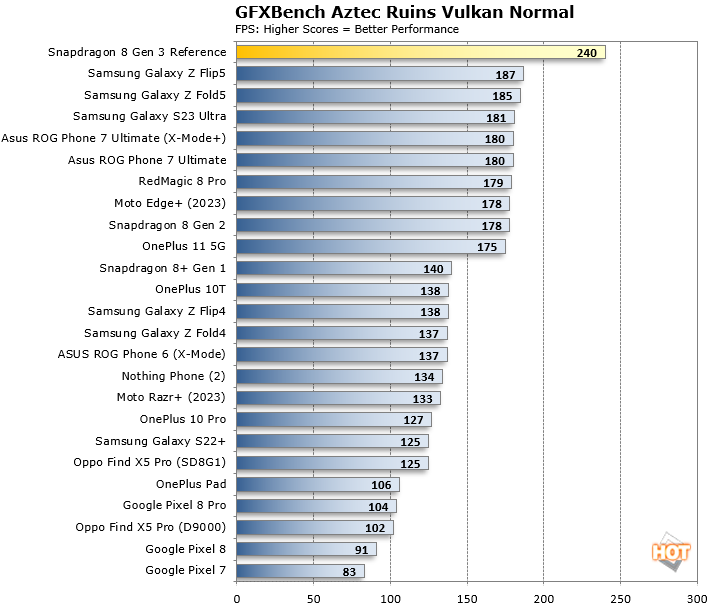
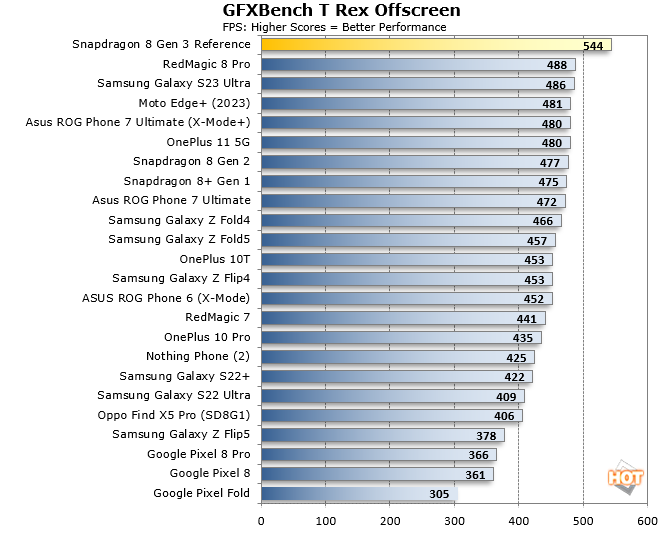
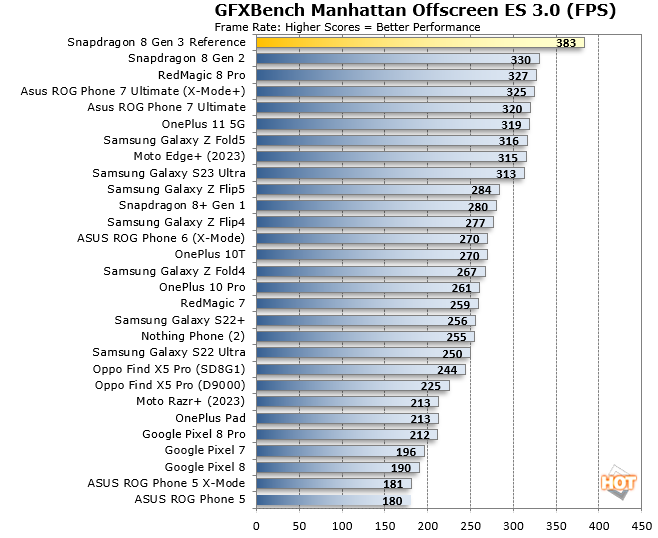
The increase in the older GFXBench test is smaller, but still impressive, showing more improvements than we typically see in newer generations of Snapdragon. Qualcomm’s reference devices are usually a bit faster than retail hardware, but the Snapdragon 8 Gen 3 has some headroom to spare.
3DMark Wildlife Benchmark
3DMark Wild Life is another graphics test that clearly shows the debut of the new generation SoC. So we expected the Snapdragon 8 Gen 3 to put up big numbers, and it did.
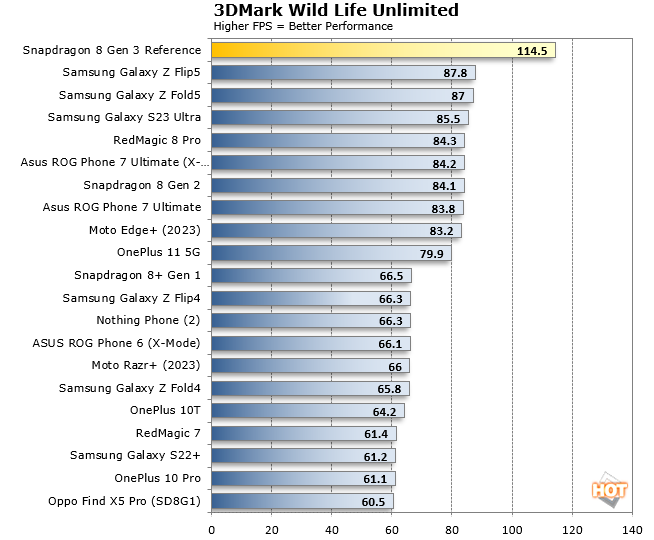
Qualcomm’s latest chip achieved 114.5 fps in the Aztec test, well ahead of the Gen 2 cluster. It’s about a 30% improvement over the Gen 2 score, which is in line with Qualcomm’s claims of improved gaming performance.
Performance summary and the way forward: a good start
These numbers give us a foundation upon which we can start speculating on the performance of Qualcomm’s new Snapdragon 8 Gen 3 platform, but we won’t have a good idea of the chip until we see it in a retail phone for testing speed. And examine ourselves. Many chips are fast on paper, or run good benchmark scores on one or more tests, but they can draw too much power or overheat during day-to-day use, so retail-readiness from Qualcomm OEM partners Equipment will be key in determining actual performance.

The AI capabilities of Snapdragon 8 Gen 3 are currently uncertain. Qualcomm claims to have optimized the new Snapdragon for AI applications, leveraging machine learning in numerous features including the modem and camera. However, this is difficult to test. Google’s Tensor chips are designed with artificial intelligence in mind, and they run some machine learning workloads on Pixel phones. However, Pixel devices always seem to benchmark poorly in general AI tests. Qualcomm’s chips always seem to perform better in this regard, but does that mean they’re better suited for AI on phones?Qualcomm said it is working diligently with Microsoft, Meta and other companies to ensure users see real Benefits of artificial intelligence in mobile phones. We’ll reserve judgment until we see what OEMs can do with the Snapdragon 8 Gen 3, though, and it should be interesting to see how things develop. Stick with us.
Note: These benchmark scores are provided by Qualcomm and confirmed with additional practice testing provided by Myriam Joire.